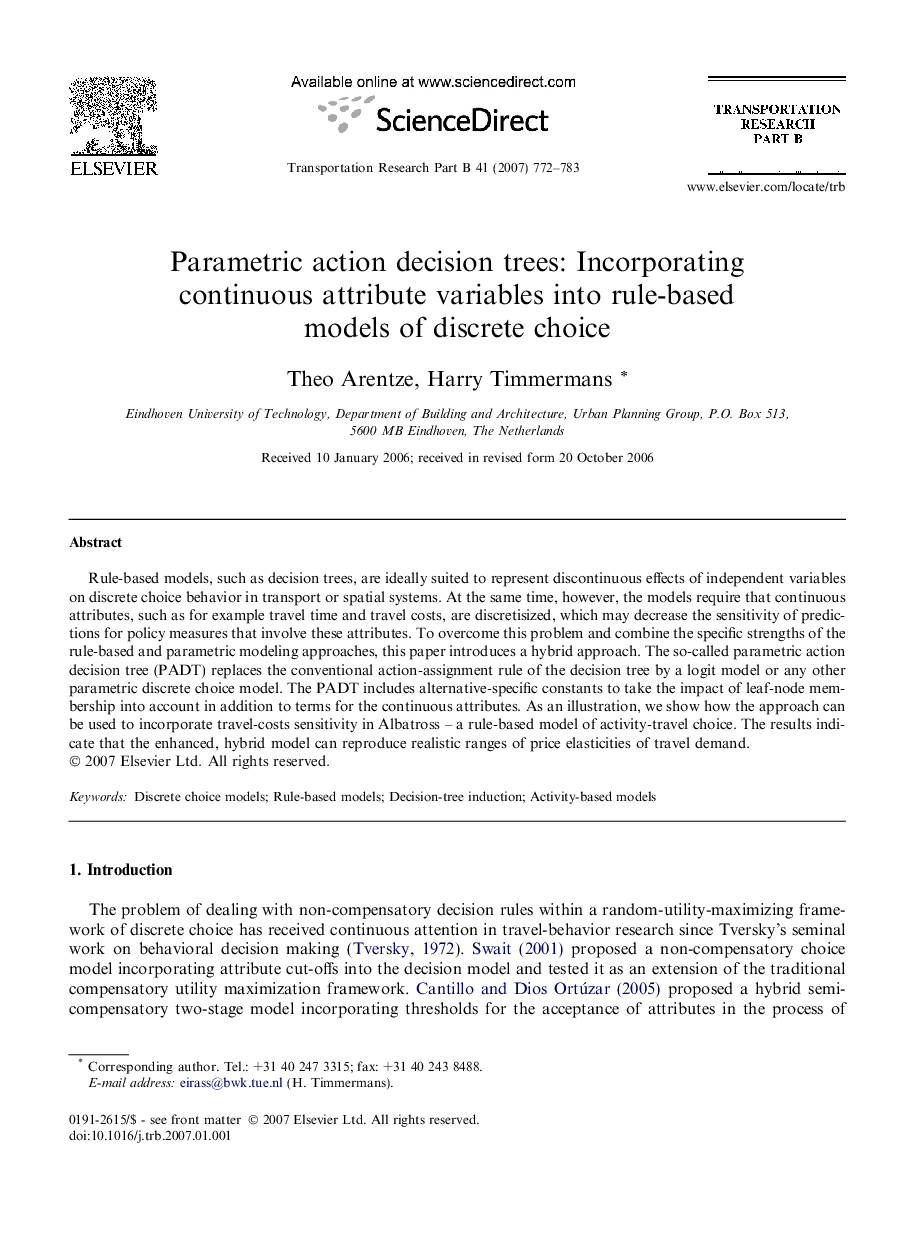| Article ID | Journal | Published Year | Pages | File Type |
|---|---|---|---|---|
| 1132629 | Transportation Research Part B: Methodological | 2007 | 12 Pages |
Rule-based models, such as decision trees, are ideally suited to represent discontinuous effects of independent variables on discrete choice behavior in transport or spatial systems. At the same time, however, the models require that continuous attributes, such as for example travel time and travel costs, are discretisized, which may decrease the sensitivity of predictions for policy measures that involve these attributes. To overcome this problem and combine the specific strengths of the rule-based and parametric modeling approaches, this paper introduces a hybrid approach. The so-called parametric action decision tree (PADT) replaces the conventional action-assignment rule of the decision tree by a logit model or any other parametric discrete choice model. The PADT includes alternative-specific constants to take the impact of leaf-node membership into account in addition to terms for the continuous attributes. As an illustration, we show how the approach can be used to incorporate travel-costs sensitivity in Albatross – a rule-based model of activity-travel choice. The results indicate that the enhanced, hybrid model can reproduce realistic ranges of price elasticities of travel demand.
